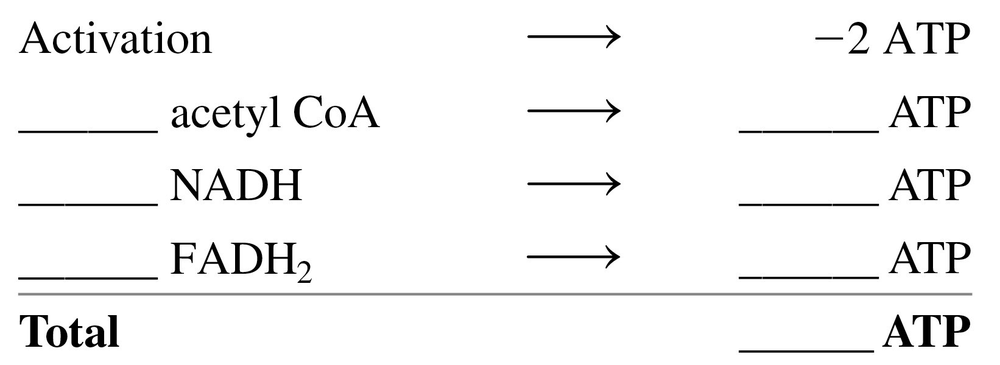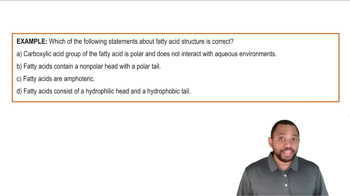Lignoceric acid, CH3 ― (CH2)22 ― COOH, is a C24 fatty acid found in peanut oil in small amounts.
a. State the number of β oxidation cycles for the complete oxidation of lignoceric acid.

 Verified step by step guidance
Verified step by step guidance Verified video answer for a similar problem:
Verified video answer for a similar problem:



 3:8m
3:8mMaster Total Energy from Fatty Acids Concept 1 with a bite sized video explanation from Jules
Start learning